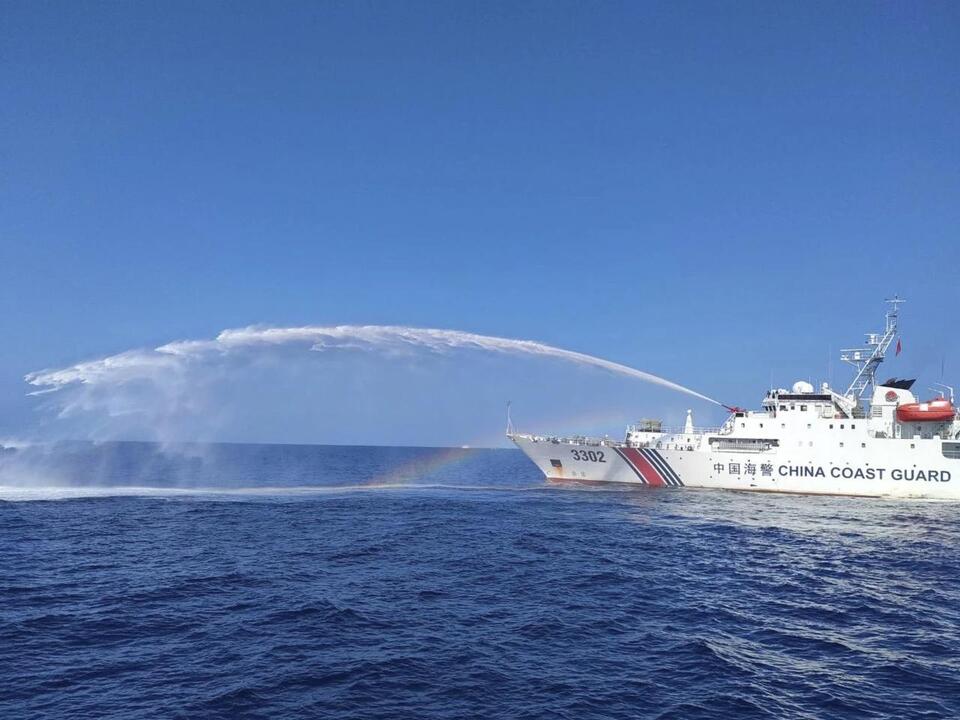Physical Address
304 North Cardinal St.
Dorchester Center, MA 02124
Physical Address
304 North Cardinal St.
Dorchester Center, MA 02124

MANILA, Philippines (AP) — China has voiced significant concerns regarding the recent deployment of a U.S. mid-range missile system in the Philippines, labeling the situation as “very dramatic” and suggesting it poses a risk to regional stability. In response, the Philippines’ Foreign Secretary Enrique Manalo provided reassurances to his Chinese counterpart that these missile systems are in the country on a temporary basis.
During their discussions in Laos last month, held alongside the Association of Southeast Asian Nations meetings, Manalo addressed China’s apprehensions. The talks involved representatives from various Asian and Western nations. Manalo revealed that Wang Yi, China’s foreign minister, conveyed China’s worries about the U.S. missiles being stationed in the Philippines.
“We talked it through, and they presented it in a very dramatic fashion,” Manalo stated in a recent press conference in Manila when discussing the issue. He affirmed to reporters, “I told them there’s no need to be concerned.”
When asked about the specifics of China’s fears, Manalo indicated that Wang expressed the opinion that the U.S. missile presence could be seen as destabilizing to the region. However, Manalo disagreed strongly, asserting, “They’re not destabilizing,” while reiterating that the missile system’s deployment is temporary.
The U.S. Army confirmed in April that it moved the mid-range missile system—a land-based weapon capable of firing the Standard Missile-6 and the Tomahawk Land Attack Missile—to the northern Philippines. This was part of joint military exercises with local troops.
Despite the high-stakes nature of the deployment, the missile system was not utilized in the recent joint exercises between the long-time allies. The Philippine military indicated that the system might be taken out of the country as early as next month.
China has consistently opposed the strengthening of U.S. military presence in the region, particularly in the Philippines, warning that such actions could jeopardize regional peace and stability.
The growing tensions between the U.S. and China are exacerbated by increasing assertive actions from China in the South China Sea, an area that has seen rising hostilities between Chinese and Philippine coast guard forces. Both nations have accused each other of aggressive maneuvers aimed at asserting territorial claims.
The South China Sea remains a critical global maritime route, with multiple countries including Vietnam, Malaysia, Brunei, and Taiwan also laying claim to parts of these bustling waters. The overlapping claims continue to ignite tensions, as conflicts in this region present significant geopolitical challenges.
The Philippines has condemned China’s aggressive actions in denouncing the way it has fortified its territorial claims. The Philippine government has sought to strengthen its military ties with the United States, viewing this as a counterbalance to China’s expansionist moves.
As the situation develops, both nations must navigate a complex web of diplomatic relations, alliances, and regional security concerns. For now, Manila stands firm in its stance, aiming to assuage doubts posed by its powerful neighbor while fostering its relationship with the United States.
The future of U.S. military assets in the Philippines remains uncertain, but the assurance provided by Manalo may reflect a diplomatic commitment to maintaining stability despite the pressures of regional rivalries.
Source: AP



